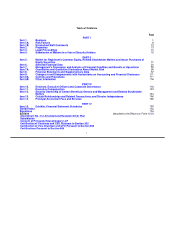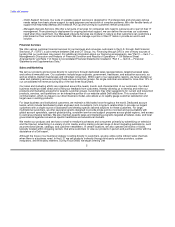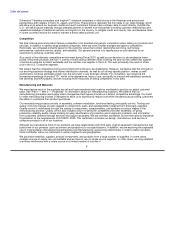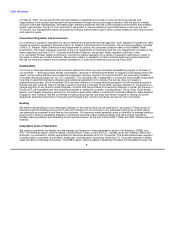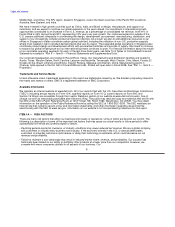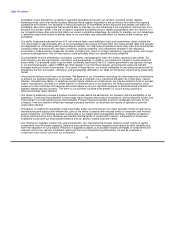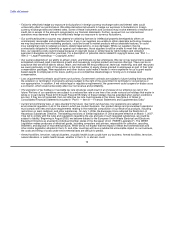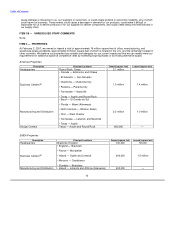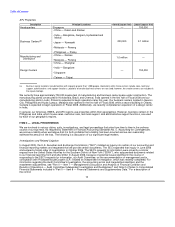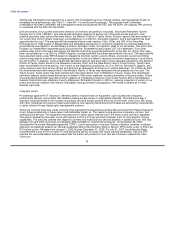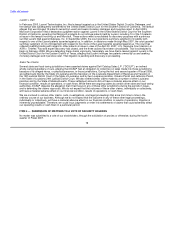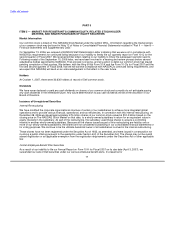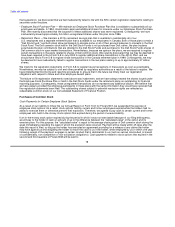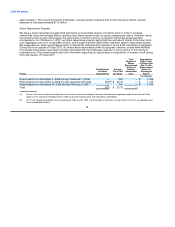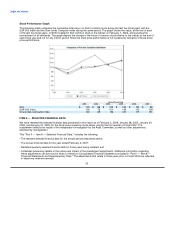Dell 2006 Annual Report Download - page 13
Download and view the complete annual report
Please find page 13 of the 2006 Dell annual report below. You can navigate through the pages in the report by either clicking on the pages listed below, or by using the keyword search tool below to find specific information within the annual report.
Table of Contents
profitability is also affected by our ability to negotiate favorable pricing with our vendors, including vendor rebates,
marketing funds, and other vendor funding. Because these supplier negotiations are continuous and reflect the ongoing
competitive environment, the variability in timing and amount of incremental vendor discounts and rebates can affect our
profitability. We cannot guarantee that we will be able to maintain our cost advantage if our competitors improve their cost
structure or business model, if we are not able to negotiate favorable pricing or rebate arrangements with our vendors, or if
our competitors take other actions that affect our current competitive advantage. An inability to maintain our cost advantage
or determine alternative means to deliver value to our customers may adversely affect our market share, revenue, and
profitability.
• Our ability to generate substantial non-U.S. net revenue faces many additional risks and uncertainties. Sales outside the
U.S. accounted for approximately 44% of our consolidated net revenue in Fiscal 2007. Our future growth rates and success
are dependent on continued growth in international markets. Our international operations face many risks and uncertainties,
including varied local economic and labor conditions, political instability, and unexpected changes in the regulatory
environment, trade protection measures, tax laws (including U.S. taxes on foreign operations), copyright levies, and foreign
currency exchange rates. Any of these factors could adversely affect our operations and profitability.
• Our profitability may be affected by our product, customer, and geographic sales mix and by seasonal sales trends. Our
profit margins vary among products, customers, and geographies. In addition, our business is subject to certain seasonal
sales trends. For example, sales to government customers (particularly the U.S. federal government) are typically stronger
in our third fiscal quarter, sales in EMEA are often weaker in our third fiscal quarter, and consumer sales are typically
strongest during our fourth fiscal quarter. As a result of these factors, our overall profitability for any particular period will be
affected by the mix of products, customers, and geographies reflected in our sales for that period, as well as by seasonality
trends.
• Infrastructure failures could harm our business. We depend on our information technology and manufacturing infrastructure
to achieve our business objectives. If a problem, such as a computer virus, intentional disruption by a third party, natural
disaster, manufacturing failure, or telephone system failure impairs our infrastructure, we may be unable to book or process
orders, manufacture, and ship in a timely manner or otherwise carry on our business. An infrastructure disruption could
cause us to lose customers and revenue and could require us to incur significant expense to eliminate these problems and
address related security concerns. The harm to our business could be even greater if it occurs during a period of
disproportionately heavy demand.
• Our failure to effectively manage a product transition could reduce the demand for our products and the profitability of our
operations. Continuing improvements in technology mean frequent new product introductions, short product life cycles, and
improvement in product performance characteristics. Product transitions present execution challenges and risks for any
company. If we are unable to effectively manage a product transition, our business and results of operations could be
unfavorably affected.
• Disruptions in component availability could unfavorably affect our performance. Our direct business model, as well as our
manufacturing and supply chain efficiencies, give us the ability to operate with reduced levels of component and finished
goods inventories. Our financial success is partly due to our supply chain management practices, including our ability to
achieve rapid inventory turns. Because we maintain minimal levels of component inventory, a disruption in component
availability could harm our financial performance and our ability to satisfy customer needs.
• Our reliance on suppliers creates risks and uncertainties. Our manufacturing process requires a high volume of quality
components from third-party suppliers. Defective parts received from these suppliers could reduce product reliability and
harm the reputation of our products. Reliance on suppliers subjects us to possible industry shortages of components and
reduced control over delivery schedules (which can harm our manufacturing efficiencies), as well as increases in
component costs (which can harm our profitability).
10


